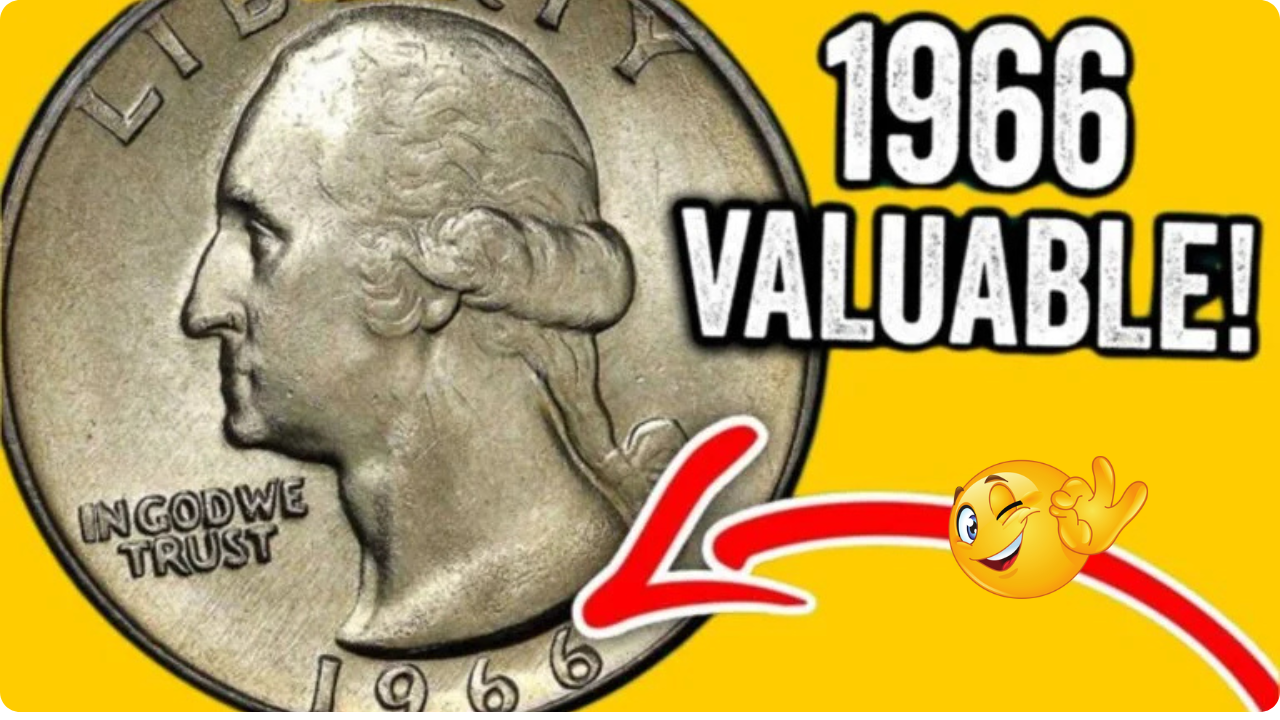Washington Quarter Could Be Worth: Imagine pulling a quarter from your pocket and finding out it’s worth $20 million! That’s the buzz around the 1966 Washington Quarter, a coin that looks like everyday change but could be a collector’s jackpot. Launched in 1966 by the U.S. Mint, most of these quarters are worth just 25 cents, but a few rare ones with unique errors or materials are sparking a frenzy among coin hunters. With over 821 million minted, could one be hiding in your coin jar? Let’s break down why this quarter’s making headlines and how to spot a potential fortune.
A Coin with a Crazy Backstory: 1966 Washington Quarter
The 1966 Washington Quarter was born during a wild time for U.S. coins. In 1965, the Mint ditched silver for a copper-nickel clad mix due to soaring silver prices, making 1966 a key year in this shift. Most quarters were struck on these new clad planchets, but rumors swirl that a few were accidentally minted on leftover 90% silver blanks or with experimental compositions. These mistakes, along with rare errors like double dies, could make a single coin worth millions, similar to the 1933 Double Eagle that sold for $18.9 million. It’s like finding a needle in a haystack, but the payoff? Life-changing.
What Makes It So Valuable?
Not every 1966 quarter is a goldmine—most are just pocket change. The ones fetching up to $20 million have specific quirks, like being struck on a silver planchet (weighing about 6.25 grams instead of the usual 5.67 grams) or showing a double die obverse (DDO), where the date or “LIBERTY” looks slightly blurred. Other rare errors include off-center strikes or proof-like finishes, despite no official proof coins being made in 1966. Only a handful of these exist, driving collectors wild and pushing auction prices sky-high for pristine examples.
| Specifications | Details |
|---|---|
| Year | 1966 |
| Mintage | 821,101,500 (Philadelphia, no mint mark) |
| Composition | 91.67% copper, 8.33% nickel (clad); rare silver errors possible |
| Weight | 5.67g (clad), ~6.25g (silver error) |
| Diameter | 24.3 mm |
| Value | Face: $0.25; Rare errors: $200-$20M (depending on condition/error) |
| Designer | John Flanagan |
How to Spot a Rare One
Think you’ve got a winner? Grab a magnifying glass and check your 1966 quarter closely. Look for doubling on the date or “LIBERTY”—a telltale sign of a double die error. Weigh it with a precise digital scale; a silver planchet error will hit around 6.25 grams and have a solid silver edge, not the coppery stripe of clad coins. Tap it gently; silver quarters ring with a high-pitched chime, unlike the dull thud of clad ones. If it looks mirror-like or has odd markings, don’t clean it—cleaning kills value! Take it to a pro grader like PCGS or NGC for authentication.
The Collector’s Frenzy
Coin collecting, or numismatics, is booming, and stories like the 1966 quarter are fueling the hype. Social media’s buzzing with coin hunters sharing tips and finds, from YouTube videos to online forums. While no 1966 quarter has publicly sold for $20 million yet, a 1970-S proof quarter on a silver planchet fetched over $35,000, and a 1966 MS-68+ clad quarter hit $21,000 at auction. Experts say a verified silver or error coin in mint condition could spark a bidding war, especially since so few exist. It’s like a modern-day treasure hunt, and everyone’s checking their change!
What to Do If You Find One
Found a suspicious quarter? Handle it like it’s gold. Store it in a soft plastic holder to avoid scratches, and don’t even think about cleaning it—dirt can actually boost authenticity. Visit a reputable coin dealer or send it to a grading service like PCGS or NGC to confirm if it’s a rare error or silver strike. If it’s the real deal, auction houses or online marketplaces like Heritage Auctions are your best bet for selling. With collectors paying millions for unique coins like the 1794 Flowing Hair Dollar, your 1966 quarter could be a ticket to millions.
Why It’s Worth the Hunt
The 1966 Washington Quarter proves treasures can hide in plain sight. Its George Washington portrait and eagle reverse are iconic, but it’s the rare errors—silver planchets, double dies, or proof-like finishes—that make it a collector’s dream. With 821 million in circulation, your odds are slim, but the thrill of finding a $20 million coin is real. So, next time you’re emptying your pockets or sorting loose change, take a second look. That quarter jingling in your jar might just be your ticket to a fortune. Grab a scale and start hunting!




